Careers at CDC
CDC Statisticians
Statisticians know numbers, they know statistics and assessments, they also know the meaning of balanced design–CDC wants you to get to know them! Read on to experience the passion, commitment, and good humor that CDC′s statisticians bring to their important work.
Brad Biggerstaff, PhD
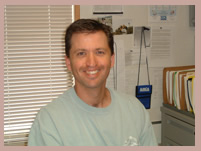
Mathematical Statistician, Division of Vector-Borne Infectious Diseases, NCID
Fort Collins, Colorado
"The project in which I have been involved that has had the most direct impact considered estimation of West Nile virus (WNV) transmission through blood transfusion," said Brad Biggerstaff, PhD, a mathematical statistician who joined CDC in 1997. Although WNV was first identified in the United States in Queens, NY, in 1999, transfusion-associated transmission of WNV was undocumented until 2002.
"My coauthor (Lyle Petersen, MD, MPH, director of DVBID) and I published a paper in the late summer of 2002, in which we estimated the probability that there was WNV transmission via blood donation (and subsequent transfusion) during the Queens 1999 outbreak." Petersen and Biggerstaff′s work appeared in print just a few weeks before the first identified case of transfusion-associated WNV transmission.
Owen Devine, PhD
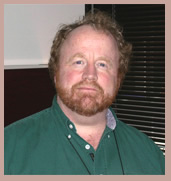
Senior Statistician, Office of the Director, NCBDDD
An initial interest in forestry eventually led Owen Devine, PhD, to a career as a statistician. Devine began his career at USDA and transferred to CDC in 1986.
"I work with Center scientists on a variety of projects focused on better understanding and, ultimately, preventing birth defects and developmental disabilities. My contribution to these projects is to give guidance on the appropriate use of analytic methods as well as carry out analyses," Devine explained.
Devine lives about 45 miles from the nearest CDC location. Ever the statistician, he estimates that this has led him to drive approximately half-a-million miles to and from work during his career!
Lillian Lin, PhD

Lead Mathematical Statistician, Quantitative Sciences and Informatics Branch, Division of HIV/AIDS Prevention, NCHSTP
"Talk to your statistician early and often!" advised Lillian Lin, PhD, who has been with the Division of HIV/AIDS Prevention (DHAP) since 1996. "The better we understand your work, the better we can work with you!"
Speaking of statisticians who work with scientific institutions, Lin elaborated by saying that, "Often, the collaboration will take the investigator into statistical areas she or he is not familiar with; almost assuredly, the statistician will encounter a scientific enterprise she or he is learning about for the first time."
Lillian Lin manages the work of the Statistical Science Team, a group of 17 statisticians who support the DHAP. "Each one serves as the sole statistical scientist on between two to eight large projects in this division, including HIV and AIDS case and behavioral surveillance, estimation of HIV incidence, behavioral and clinical HIV prevention intervention studies, promotion of HIV testing, and monitoring the health and health care of people with HIV," said Lin.
Henry Roberts, PhD
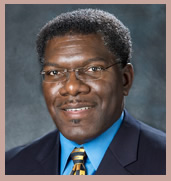
Statistician, Behavioral Surveillance Branch, Division of Adult and Community Health, NCCDPHP
Music′s loss was public health′s gain when Henry Roberts, PhD, chose mathematics over playing lead trombone for the Marching Wildcats of Bethune-Cookman College. Roberts, who has been a statistician in the Division of Adult Community Health since May 2004, provides statistical support to CDC′s state and academic external partners, conducting statistical training courses, statistical consultations, and research collaborations.
"I am presently the lead in collaboration between the North Carolina Department of Health and Human Services and CDC, studying the robustness of the Behavioral Risk Factor Surveillance System (BRFSS) prevalence estimates," he said. BRFSS, the world′s largest telephone survey, monitors the prevalence of the major behavioral risks among adults associated with premature morbidity and mortality.
Roberts joined CDC in 2000.
Nathaniel Schenker, PhD
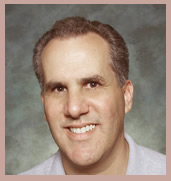
Senior Scientist for Research and Methodology, NCHS
Hyattsville, Maryland
At CDC, Nat Schenker, PhD, may be best known for his work on "race bridging" for Federal data. "Under the standards for race reporting specified by the Office of Management and Budget in 1997," Schenker explained, "respondents to Federal data collections are allowed to specify more than one race in describing a person. In contrast, the prior standards had called for reporting just a single race."
Schenker worked with colleagues from NCHS and the Bureau of the Census. "Our bridging model was fitted using data from the National Health Interview Survey, which collects race reports under both standards. The products of this project have been used extensively by data analysts both inside and outside CDC".
"The project and related publications led to several honors for members of the team," said Schenker, "including a 2004 CDC/ATSDR Honor Award, a 2003 NCHS Director′s Award, honorable mention in the 2004 CDC/ATSDR Statistical Science Awards, nomination for a 2004 CDC/ATSDR Charles C. Shepard Science Award, and the 2004 Morris Hansen Memorial Lectureship."
William K. (Karl) Sieber, PhD
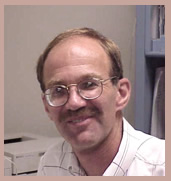
Research Health Scientist, Division of Surveillance, Hazard Evaluations, and Field Studies, NIOSH
Cincinnati, Ohio
Karl Sieber, PhD, is the current chair of CDC′s Statistical Advisory Group (SAG) and works as a NIOSH statistician designing surveys and methods related to occupational safety and health exposure assessment. The SAG was founded in the late 1980s by G. David Williamson, Donna Stroup, and others for the purpose of coordination of statistical activities across CDC and ATSDR.
Sieber′s experience in occupational safety and health has included working with indoor environmental quality issues and industrial exposures such as from metal working fluids. One of his more challenging analyses had to do with the anthrax investigations in the autumn of 2001. "This work has led to various other analyses," Sieber explained, "most recently, a project on modeling particle deposition and dispersion in a room or building using deterministic methods [computational fluid dynamics] and probabilistic approaches [spatial statistics]."
Theresa Ann Sipe, PhD
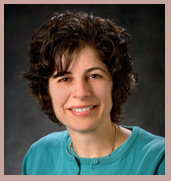
Statistician, Guide to Community Preventive Services, NCHM
Starting her career as a nurse, Theresa Ann Sipe, PhD, next became a certified nurse-midwife, delivering more than 300 babies in five years at Atlanta′s Grady Memorial Hospital. She also obtained masters degrees in public health education and nursing and a PhD in research, measurement and statistics.
In her current job she provides technical expertise for planning and analyzing the systematic review of research that is subsequently used by The Task Force on Community Preventive Services to make recommendations that inform effective public health practice and policy. Sipe said two recent interesting reviews studied school violence prevention programs and youth in the adult criminal justice system.
Lilo Strauss
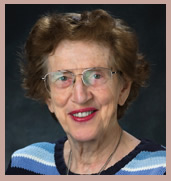
Mathematical Statistician, Division of Reproductive Health, NCCDPHP
"Lilo is known to have one of the best serves of any CDC tennis player," said her co-worker Renee Brown-Bryant, associate director for health communications, DRH. "We often don′t tell new employees that Lilo will whip you in a heartbeat with her serve and her ability to predict the odds of you returning or winning a point off her or her doubles partner!"
Lilo Strauss is better known for her 31 years as a statistician in the Division of Reproductive Health. She is proudest of her work on "a long, comprehensive infant mortality surveillance project, which resulted in a dedicated Public Health Review with 13 articles on the subject, 10 of which I co-authored."
Trevor Thompson
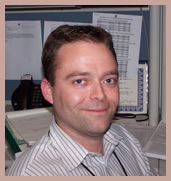
Survey Statistician, Division of Cancer Prevention and Control, NCCDPHP
Trevor Thompson provides statistical support to the Division of Cancer Prevention and Control. "The majority of my projects are performing statistical analysis for peer-reviewed journal articles," he explained. "Another project I work on is the United States Cancer Statistics report, an annual joint publication from the CDC and the National Cancer Institute presenting national data on cancer incidence and mortality. I am responsible for generating all the data tables and figures for this large report."
Thompson described himself as "always interested in math and science." He said he also enjoys the programming aspect of the statistician′s job.
Leisa Weld, PhD
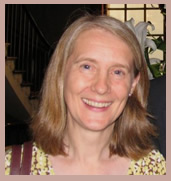
Statistician, Division of Global Migration and Quarantine, NCID
"My work is very applied and relatively easy to understand for a non-statistician," said Leisa Weld, PhD.
"I work as part of the travelers′ health team," Weld explained. "I am very involved in GeoSentinel, a sentinel surveillance network of the International Society of Travel Medicine and CDC. As such, I work on surveillance of diseases in mobile populations crossing international borders."
A good fit for the Division of Global Migration and Quarantine, Weld speaks Spanish, German, and some French.
Elizabeth Zell, MStat
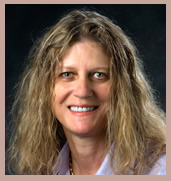
Mathematical Statistician, Biostatistics Office, Division of Bacterial and Mycotic Diseases, NCID
"Not all statistics is complex data analysis," said Elizabeth Zell, a 25-year-veteran of CDC. "Sometimes the simplest descriptive analysis tells the important story about a disease or outbreak."
Each statistician in the Division of Bacterial and Mycotic Diseases specializes with one branch of the division, and Zell works with the Respiratory Disease Branch. She has worked on many projects, including those associated with early onset group B streptococcus and its prevention. The most rewarding for her, however, dealt with the development and implementation of the National Immunization Survey. Zell said the NIS was particularly rewarding "because of the collaboration and personal relationships and friendships that developed" across CDC Centers.
Get email updates
To receive email updates about this page, enter your email address:
Contact Us:
- Centers for Disease Control and Prevention
1600 Clifton Rd
Atlanta, GA 30333 - 800-CDC-INFO
(800-232-4636)
TTY: (888) 232-6348
24 Hours/Every Day - cdcinfo@cdc.gov

